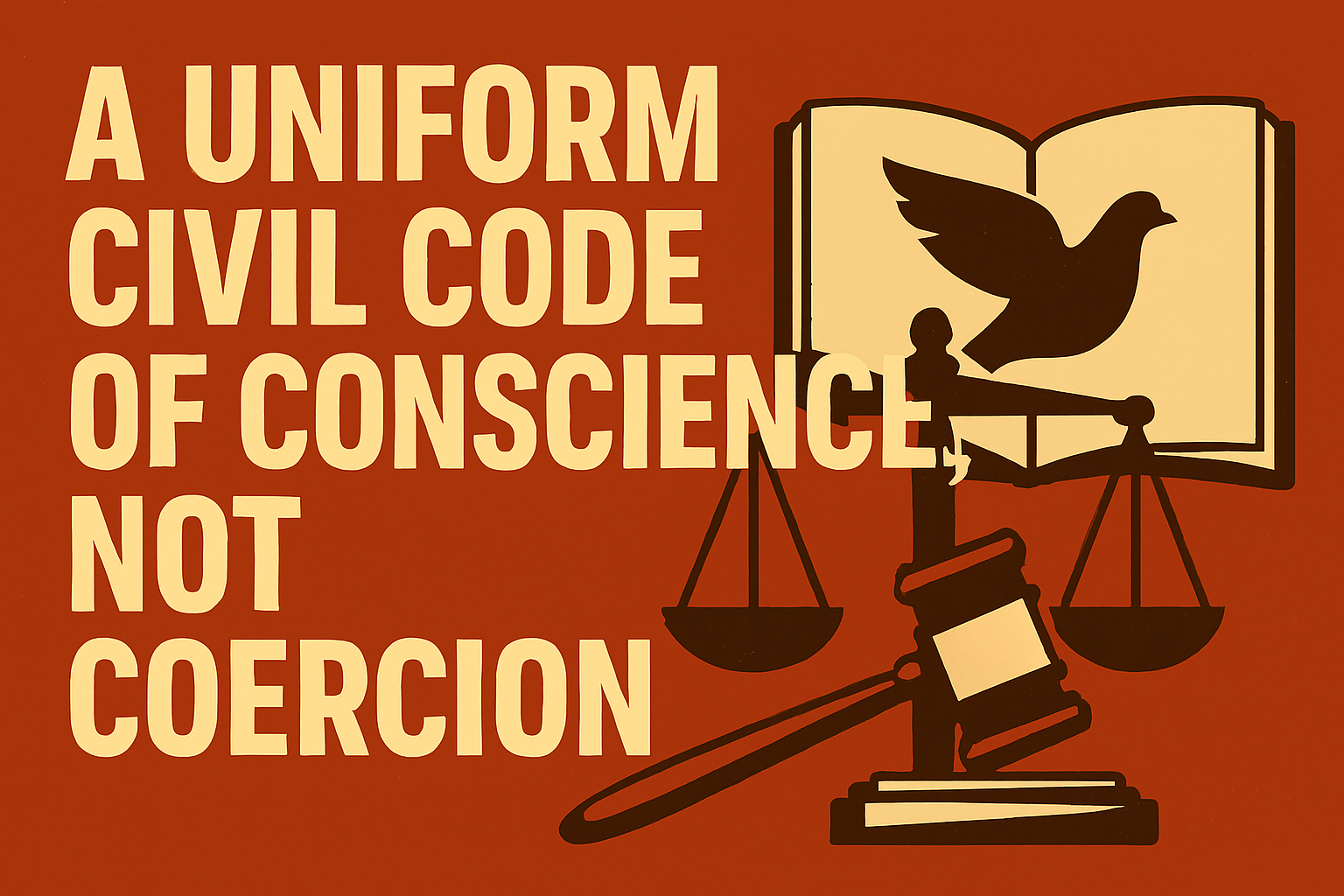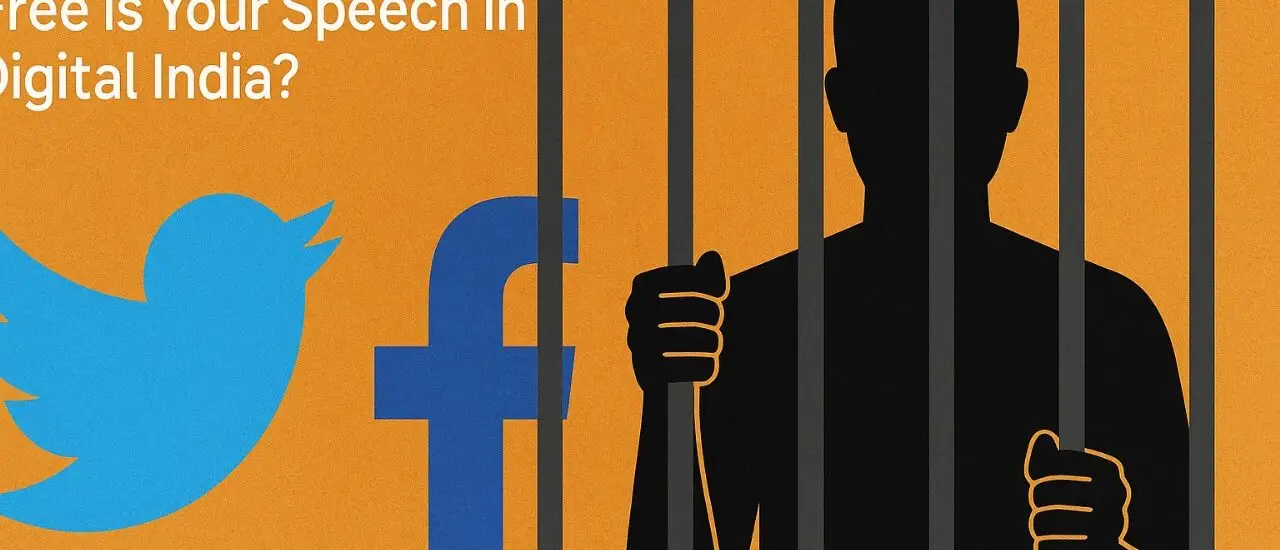



Author: Disha Maheshwari
College Name: NMIMS Kirit P. Mehta School of Law
1. INTRODUCTION
What is freedom of speech? One may assume. In the very basic sense it is a fundamental right of every Indian citizen to articulate their opinions, feelings and ideas without the fear of retaliation, legal sanction or censorship.
In today’s world of digital globalization, where platforms like Instagram, Twitter, X, Threads, WhatsApp and Facebook have become primary sources of information for millions of youths
across the world, the growing importance of Digital platforms is unmatched.
The internet knows everything, it helps in providing firsthand information directly by the victims in just a click
making the process of spreading awareness across the nation much easier and accurate. However, in recent years, India has witnessed a growing tension between the right to free speech and state control over digital expression. The arrest of individuals over tweets, contend takedowns orders, internet shutdowns and vague laws governing online speech have raised urgent questions:
How free is your speech in the digital age? Can a post land you in jail?
2. UNDERSTANDING FREE SPEECH IN DIGITAL AGE
Understanding free speech in the Digital Age, it is a well-known fact that online content is largely unregulated and often anonymous leading to spreading of fake or confidential news, hate speech, trolling, cyberbullying and abuse.
As a result, governments across the world, including India, have started monitoring content by imposing restrictions on what is being uploaded on
social media in the name of maintaining public order and peace in the society. Although regulation of social media is no doubt an important job, there has been a major clash in the name of maintaining public order and citizens expressing their views and discontentment regarding the working of government. With approximately 806 million internet users and 491 social media users, digital platforms are essential for voicing disapproval of the government, raising
awareness, and igniting protests against unjust policies in India.
The phrase “Tweet, Post, Jail” is no exaggeration in the Indian context. In recent years, several individuals including students, journalists, comedians, and activists have faced police action for online content that allegedly hurt sentiments, disrupted public order, or criticized state authorities.
3. CONSTITUTIONAL FRAMEWORK:
The Indian Constitution, under Article 19(1)(a), guarantees the right to freedom of speech and expression, but this right is not absolute. The first amendment act dealt with the abuse of freedom of speech and expression hence inserting article 19(2). According to Article 19(2), “reasonable restrictions” may be imposed on the basis of India’s sovereignty and integrity, security of the state, friendly relations with other nations, public order, decency or morality, contempt of court, defamation, or incitement to crime.
4. LEGAL FRAMEWORK
–Information Technology Act, 2000
It is a primary legislation dealing with the constitution which deals with the online content being posted digitally.
Section 66A – Punishment for Sending Offensive Messages through Communication. Struck down as unconstitutional in Shreya Singhal v. Union of India (2015). It criminalized sending “grossly offensive” or “menacing” messages online.Problem lies in its vague and overbroad language led to misuse arrests for harmless tweets or Facebook posts. Current concern is even after being struck down, FIRs are still being registered under this section.
Section 66F– Cyberterrorism and online acts that aim to jeopardize India’s security, integrity, or sovereignty are covered under Section 66F. In cases where activists or protesters are accused of having “anti-national” content, it has been stretched.
Section 67– Electronic Publication or Transmission of Obscene Content. It includes online sexually explicit content, nudity, and pornographic content. frequently abused when it comes to memes, artwork, or satirical material that some people find “obscene.”
Section 69A – Power to Issue Directions for Blocking Public Access to Information. It allows government to direct intermediaries (Twitter, Facebook, etc.) to block content in the interest of national security, public order, confidentiality, integrity and sovereignty of India. It is used in blocking tweets, YouTube videos, news articles, etc.
Section 79 – Deals with Safe Harbour Provisions for Intermediaries. Protects platforms like Twitter, YouTube, Instagram from being liable for content posted by their users. If they follow due diligence. If platforms don’t follow government takedown orders or grievance redressal norms, they lose the safe harbour.
–Information Technology (Intermediary Guidelines and Digital Media Ethics Code) Rules, 2021
The Information Technology Act of 2000, which gives electronic commerce legal recognition, is the source of the IT Rules’ authority. For intermediaries who exercise due diligence in carrying out their responsibilities and adhere to state-mandated guidelines, the Act offers a “safe harbour.”
Social media sites like Facebook, Instagram, Twitter, and WhatsApp are examples of intermediaries. Intermediaries are granted immunity under Section 79 of the Act, provided they adhere to state-mandated guidelines and due diligence. Social media companies were forced to offer technological means of determining the original source of any information, putting users’ privacy at risk. By requiring intermediaries to remove posts that are deemed false or fraudulent, the amendments proposed in April 2023 grant the government broad censorship powers and the authority to determine for itself what information is fraudulent. Based on these findings, which are vague and open-ended, the Fact Check Unit has unrestricted authority to determine what information is untrue and force social media companies to take action.
Related Article You Must Like
– Sedition
In accordance with Section 152 of the Bharatiya Nyaya Sanhita, 2023, anyone who intentionally or knowingly incites or attempts to incite secession, armed rebellion, or subversive activities through spoken or written words, signs, visual representation, electronic communication, financial means, or other means, or who puts the sovereignty, unity, and integrity of India in jeopardy will face consequences.
The penalties listed in this section include a mandatory fine in addition to life in prison or a maximum of seven years.
–Defamation
Any person who makes or publishes any statements about another person which he knows or has reason to believe will harm the reputation of that person, with the intention of harming the reputation of such person, is said to defame that person.
5. Tweet, Post, Jail: recent cases of criminalisation:
In recent years, there has been a rise in India’s use of these legal frameworks to repress and punish activists, victims, and anyone else who expresses disapproval or criticism of the government.
Shreya Singhal v. Union of India (2015)- Two women were detained by police for allegedly making objectionable and offensive remarks on Facebook regarding the appropriateness of closing Mumbai following the passing of a political figure. Under Section 66A of the
Information Technology Act of 2000 (ITA), which penalizes anyone who transmits information through a computer resource or communication device that is blatantly offensive or that is sent with the knowledge that it is false with the intent to cause annoyance, inconvenience, danger, insult, injury, hatred, or ill will, the police made the arrests. The court found that because the section did not explain terms such as “annoyance” or “annoyance,” “a very large amount of protected and innocent speech” could be curtailed, bestowing upon the government a considerable amount of unmonitored authority that would enable them to dismantle anything and anyone they wished who disagreed with them. Consequently, Section 66A of the IT Act was struck down.
Mohammad Zubair (Alt News) Zubair was detained for a month in 2022 after being arrested by Delhi police for allegedly “insulting Hindu religious beliefs” in a 2018 tweet. His incarceration sparked additional worries about the condition of press freedom in India under Prime Minister Narendra Modi.
Kunal Kamra (contempt) After Kamra said that the Supreme Court was a “Brahmin-Baniya” affair, a petition against him was submitted to the court. The petition was submitted as an application for intervention in a contempt of court case against Kunal Kamra that was already pending. In his 2021 affidavit, Kamra justified his tweet against the judiciary, claiming that if influential individuals and institutions are unable to accept criticism, India will become a “country of incarcerated artists and flourishing lapdogs.”
Disha Ravi (Tool kit case)- The toolkit is a “routine document used by social justice campaigners to raise awareness about issues and suggest strategies to proceed.” According to their own analysis, it was “meant to enable anyone unfamiliar with the ongoing farmers’ protests in India to better understand the situation and make decisions on how to support the farmers.” A Delhi police team arrested Disha for questioning at her Bengaluru home after she allegedly shared a social media toolkit about the 2020–2021 Indian farmers’ protest. She was placed under police custody for five days.
6. WAY FORWARD
A legal framework that upholds rights must go hand in hand with India’s digital transformation. Although there is a legitimate need to combat hate speech, disinformation, and national security threats, the legal strategy must be reasonable, open, and specifically designed. To ensure that criticism of the government is not mistaken for subversion, vague laws like Section 69A of the IT Act and Section 152 of the BNS should be amended to include clear definitions and procedural safeguards.
Furthermore, rather than merely serving as reactive arbiters, courts must take an active role in protecting digital rights. Reviewing wrongful takedowns or arrests should be expedited, especially when the speech involves dissent, satire, or public interest.
Additionally, there is an urgent need to inform law enforcement and the public about the extent of free speech protections and the risks associated with overcriminalization.
Lastly, to guarantee that content moderation is equitable, consistent, and based on rights, India should transition to an independent regulatory framework rather than state-run fact-checking organizations. Voting is only one aspect of true democracy; another is the freedom to express oneself without fear, even when doing so online.
7. REFERENCES
https://www.indiacode.nic.in/bitstream/123456789/13116/1/it_act_2000_updated.pdf
https://legislative.gov.in/constitution-of-india
/https://globalfreedomofexpression.columbia.edu/ca/ses/the-case-of-disha-a-ravi/